Unlike other Lockheed Skunk Works aircraft, the X-59 definitely isn’t a top-secret military plane. But it is no less interesting, or unusual!
The aircraft in these pictures looks like a rendering of a strange-looking science-fiction project. It isn’t. This aircraft has been in the making for several years, and while it borrows a few parts from existing planes, it is undoubtedly unique.
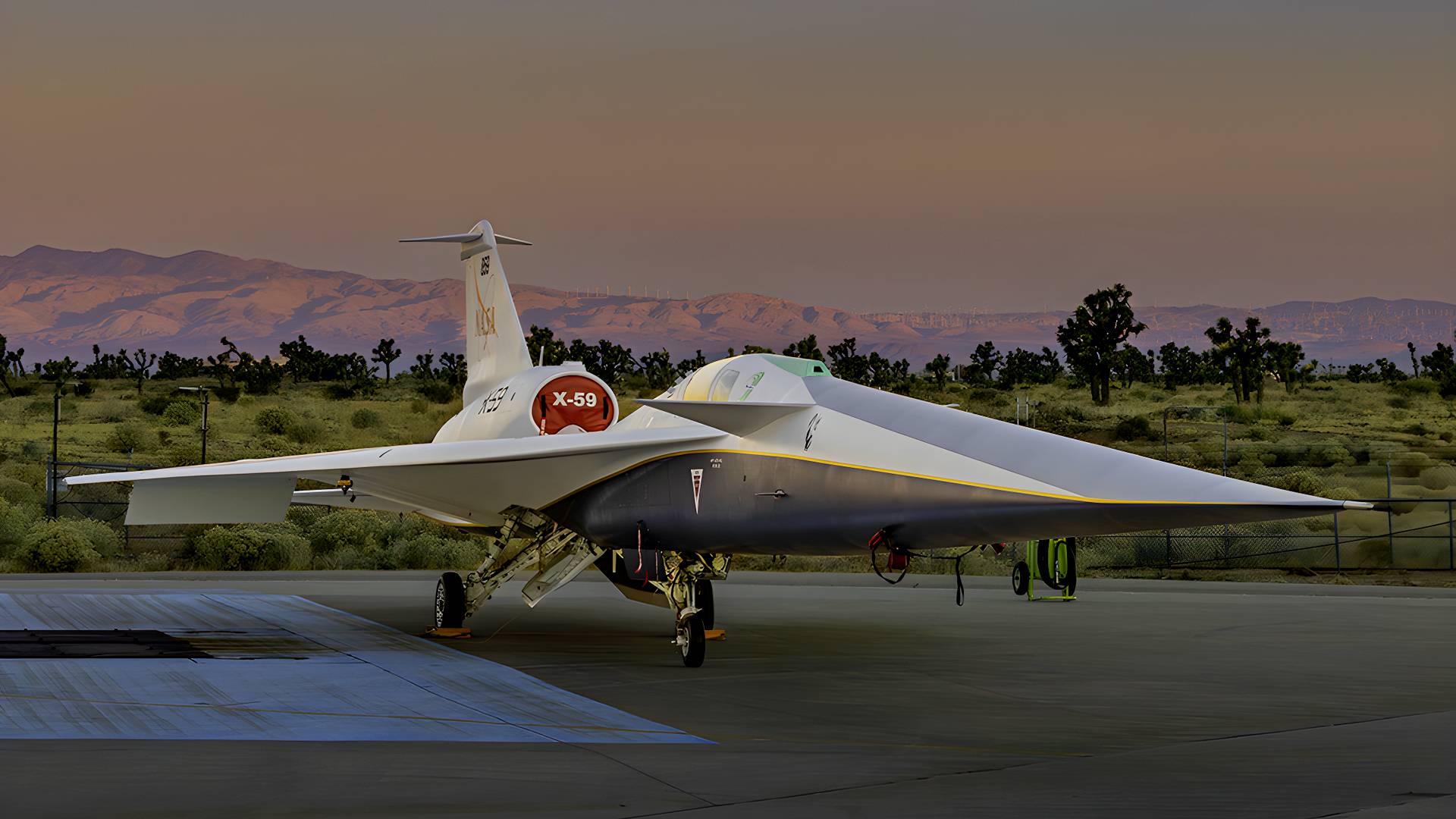
Lockheed built the X-59 for NASA’s Quesst mission. Also known as the quiet supersonic aircraft, the X-59 will essentially be used to determine if it is well-named. It will fly at speeds of Mach 1.4, for NASA and the FAA to see if its shape makes it less annoying to those it flies over.
The X-59 has landing gear from a Lockheed F-16, and an F414 engine normally used on F/A-18 or Gripen-E fighter jets. Its canopy looks like it came from an F-5. But instead of a windshield, the front of the aircraft is a smooth, LONG… snout. With some cameras.
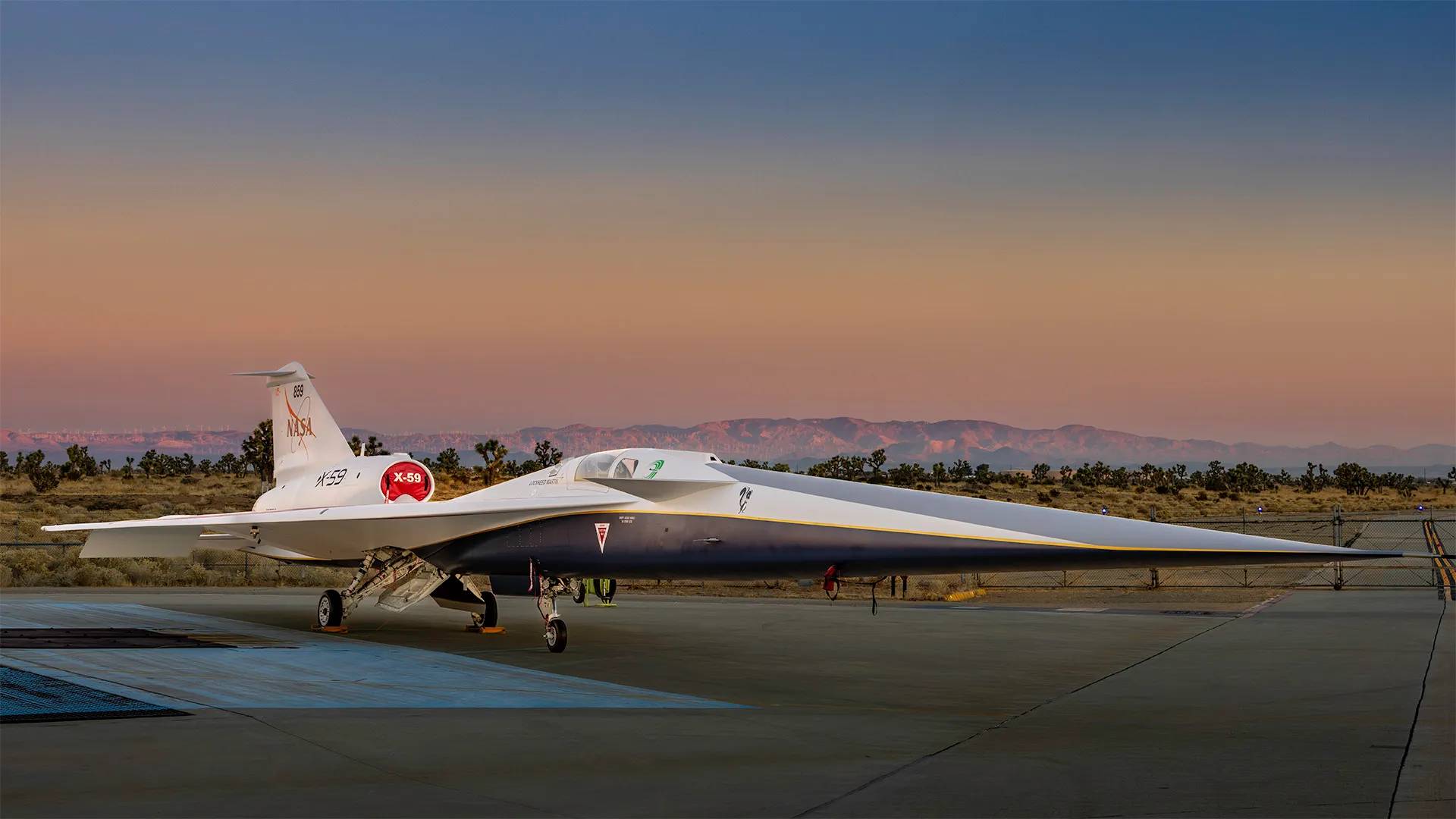
The Lockheed X-59
NASA and Lockheed had published pictures of the X-59 before but without its final paint scheme. It now appears to be almost ready for its first flight. Besides the paint job, Lockheed has put the aircraft through vibration and other ground testing.
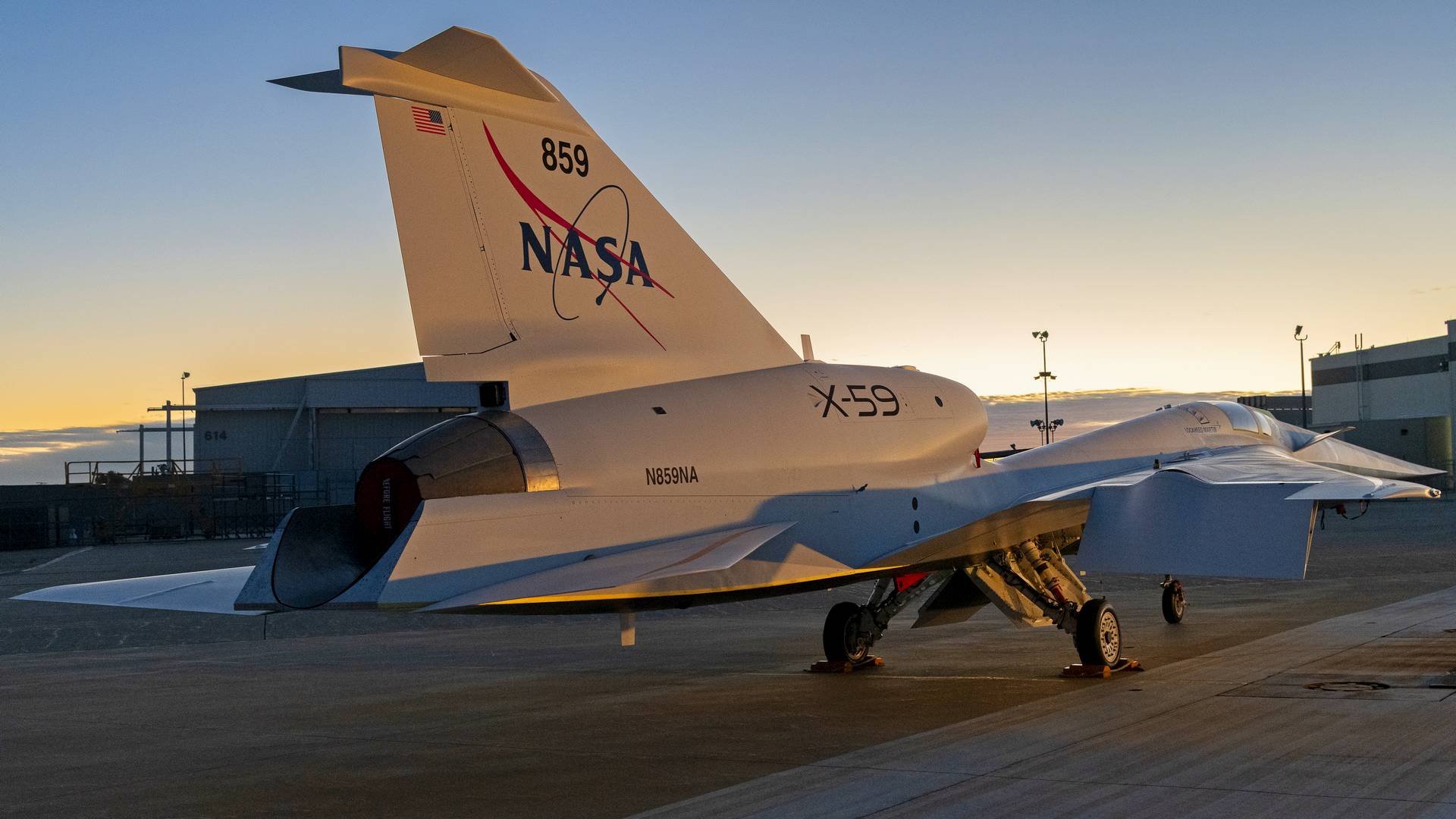
The aircraft’s first flight should come in 2024, with its first supersonic flight following in the same year. Then Lockheed will pass the aircraft over to NASA, so it can begin its acoustic testing. NASA has already been trialing a number of ways to measure the aircraft’s acoustic signature, to compare it with that of other aircraft.
Once NASA confirms that the Lockheed X-59 is quieter than other similarly-sized jets, it will schedule flights of the plane over a number of American cities. This should happen in 2025 and 2026. NASA and the FAA organized such flights in the 1960s, with various supersonic jets.
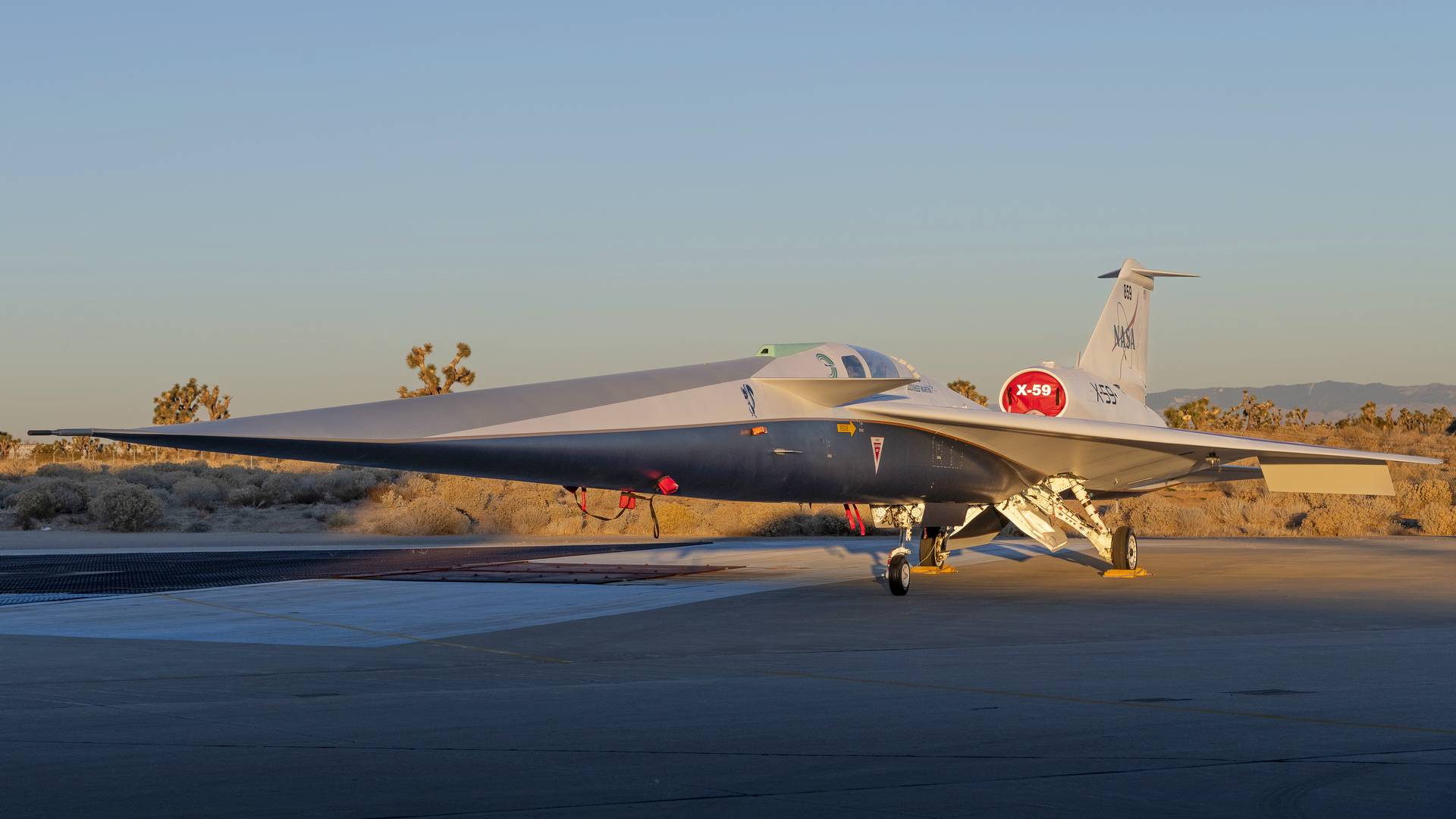
While many people didn’t mind those flights, enough complained to show that supersonic flights over land were a problem. The FAA went ahead to ban supersonic flights over land, with other aviation authorities doing the same. But the Lockheed X-59 could change this.
Defining A Specification
In simple terms, the idea is to turn the blanket supersonic ban into an acoustic signature-based ban. NASA will use the X-59 (and other, noisier jets) to develop noise criteria for the certification of supersonic passenger aircraft.

If all this goes well, then various companies could use this criteria, to develop new supersonic airliners and/or business jets. It will be interesting to see who these companies might be. Boom Supersonic is working on its Overture airliner but doesn’t plan to optimize it for flights over land.
Flying the Lockheed X-59 will have some peculiarities. With that long snout blocking forward visibility, the aircraft’s pilot relies on a set of cameras, to provide the necessary feed on a 4K monitor.
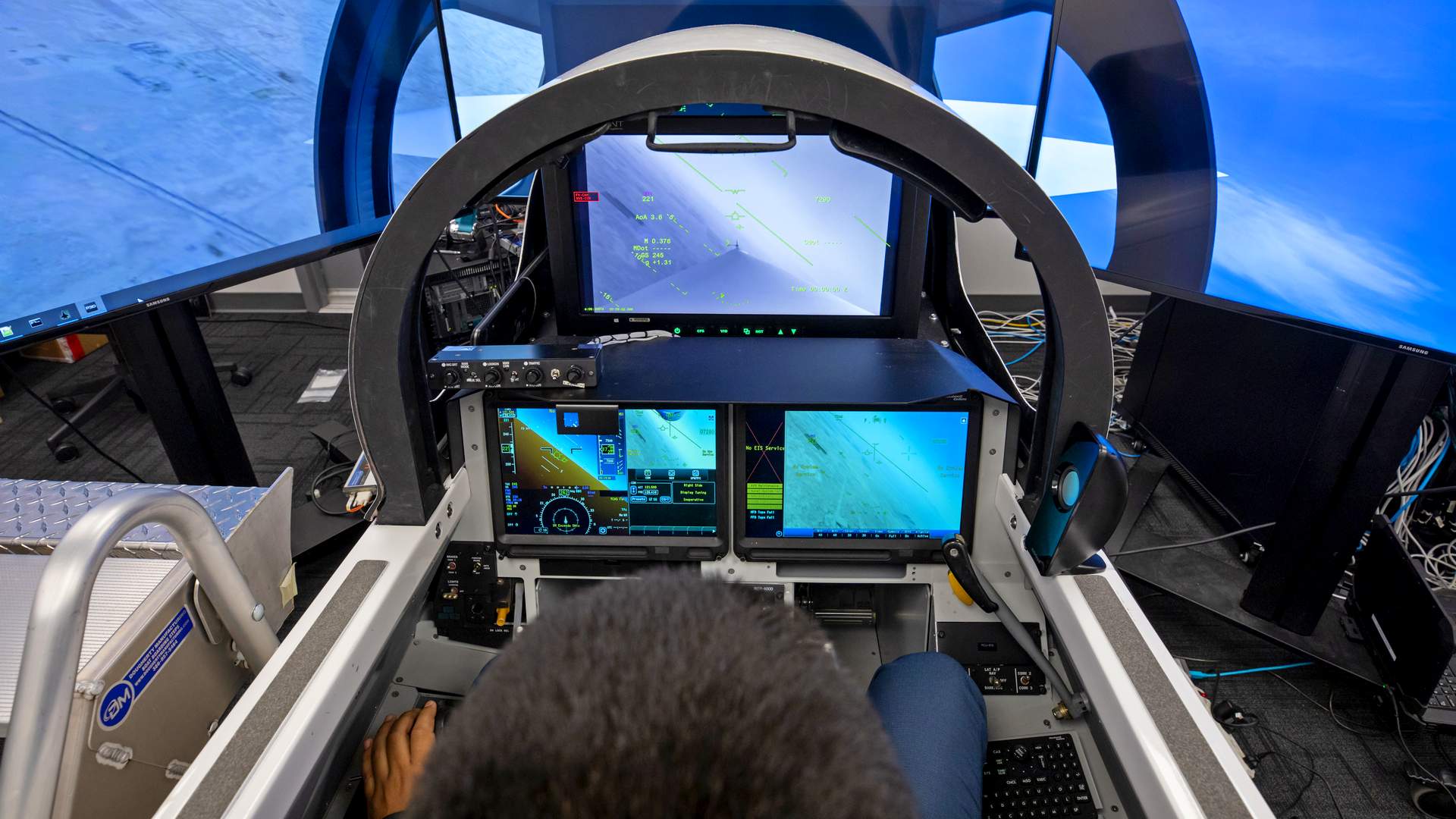
The aircraft is 99.7 feet (30.39 meters) long, with that nose accounting for over a third of that (38 feet/11.6 meters). Obviously, it is not a prototype of any kind. Its design doesn’t serve as a blueprint for a commercial supersonic aircraft.
So those wishing to build supersonic passenger aircraft will need to figure out how to match the quietness of the X-59 with their designs. Is the development of such an aircraft a realistic prospect, especially given the push towards more efficient aircraft today? Answering this convincingly might be as difficult as the development of the aircraft itself.




4 comments
Iskender Kutlucinar
Getting to Mach 1.4 doesn’t the jet intake being behind the cockpit starve for air at takeoff and getting up to speed?
Regards,
Isken.
Sonny
Long time coming
Sunflower
That’s pretty cool. The instruments look quite advanced.
prajwal
oh